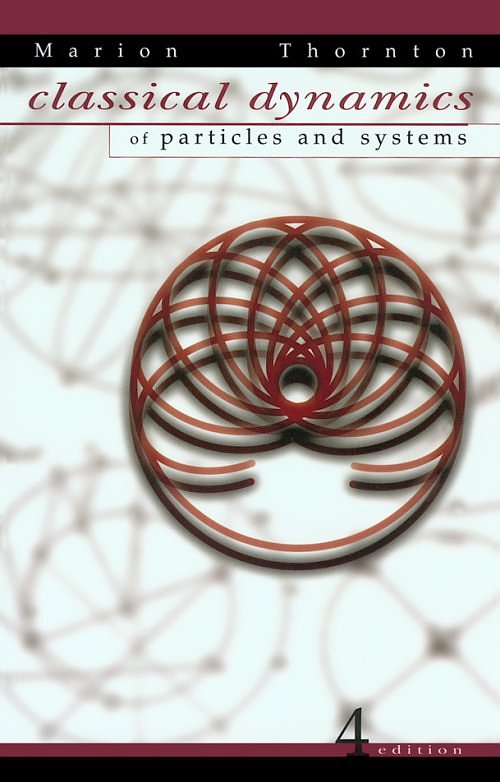


Credit: 3 semester hours.
Pre-requisites:
PHY-3221 and PHY-4323: Intermediate Mechanics and Electromagnetism.
Co-requisites: None.
The aim of the course is to expose senior undergraduate students to Classical Mechanics and Electrodynamics. We will start with the formal Lagrangian and Hamiltonian Mechanics, which is also a foundation of Quantum Mechanics. After a thorough treatment of the classical Kepler problem we will turn to to Classical Electrodynamics. Studying the physical meaning of the four Maxwell's equations, culminates in the unification of electricity and magnetism. The existence of electromagnetic waves is shown and the wave equation turns out to be inconsistent with Galilee Invariance. Following Einstein, we will introduce the postulates of the Special Theory of Relativity and modify Newtonian Mechanics accordingly. After some examples and applications, we introduce the four dimensional Minkowski space and the powerful approach of Covariant (frame-independent) Equations. In this framework it is shown that Maxwell's equations are the simplest first order differential equation which connect the six electromagnetic fields (three electric and three magnetic) with a conserved electromagnetic current. Finally, we will consider the Lagrangian formulation of Classical Electrodynamics.
Course Outline:
| Hamilton's Principle - Lagrangian and Hamiltonian Dynamics | Chapter 7 (M&T) |
| Central Potential Motion. Kepler problem. | Chapter 8 (M&T), Notes. |
| Maxwell's Equations and Waves. | |
| Electrodynamics and Special Theory of Relativity. Lagrangian Dynamics for Electrodynamics. | Notes. |
Home and Class Work
| Set 1 |
Solutions: 6.pdf ,
8_1.gif ,
8_2.gif .
| Set 2 |
Solutions: 10.pdf ,
12.jpg .
|
Set 3 |
Solutions:
13.pdf ,
14.pdf ,
15.pdf .
|
Set 4 |
Solutions:
17.pdf
(Fortran,
gnuplot,
Maple),
18.pdf .
|
Set 5 |
Solutions:
20.pdf ,
21.pdf .
|
Set 6 |
Solutions:
22.5.pdf .
|
Set 7 |
Solutions:
24.pdf ,
see notes.
|
Set 8 |
Solutions:
Korbits.txt ,
27a_b.pdf ,
Korbits.pdf ,
KParameters.txt ,
Fortran ,
28.pdf .
|
Set 9 |
Solutions:
30.pdf .
|
Set 10 |
Solutions:
35.jpg ,
36.pdf .
|
Set 11 |
Solutions:
37.pdf ,
38.pdf ,
39.pdf ,
39.mws ,
41.pdf ,
41.mws .
|
Set 12 |
Solutions:
43.pdf ,
45.pdf ,
45.f ,
45.plt ,
45figure .
|
Set 13 |
Solutions:
46.pdf ,
49.pdf .
|
Set 14 |
Solutions:
51.gif .
|
Exams
|
Midterm (Wednesday March 17)
|
Solutions . |
| Final (Friday April 30) |
Textbooks:
S.T. Thornton and J.B. Marion,
Classical Dynamics of Particles and Systems
, (Harcourt College).
Any edition will do (search the web for inexpensive used copies in
good condition).
The instructor will provide notes on the Electrodynamics part.
Evaluation of Performance:
The course grade will be
based on homework assignments, classworks, a midterm exam, and the final
exam. Classworks are unannounced quizzes and assignments, which have to
be completed during the lecture hour. In contrast to exams classworks
will be open book and you can freely talk with one another and the
instructor. Missing class unexcused results in zero points on the
particular classwork, if their is some at that day. There will be one
homework set of about two problems per week. Solutions turned in every
Monday in class. Discussions of the homework problems among students
are encouraged - but each student must turn in
his/her own assignment and should be able to explain his or her solution
to the rest of the class. The instructor will post solutions
after the homework is returned.
Assessment and Grades:
| Home and class works | 70% |
| Midterm (March 10) | 10% |
| Final Exam | 20% |
| A>90%, A->85%, B+>80%, B>70%, B->65%, C+>60%, C>50%, C->40%, D>20%, F the rest. |
Academic Honor Code:
Students are expected
to uphold the Academic Honor Code published in he Florida State University
Bulletin and the Student Handbook. It is based on the premise that
each student has the responsibility (1) to uphold the highest standards
of academic integrity in the student's own work, (2) to refuse to tolerate
violations of academic integrity in the University community, and (3)
to foster a high sense of integrity and social responsibility on the
part of the University community.
ADA Statement:
Students with disabilities
needing academic accommodations should: a) register with and provide
documentation to the Student Disability Resource Center SDRC; b) bring
a letter to the instructor from SDRC indicating that you need academic
accommodations. Please do this during the first week of class. This and
other materials are available in alternative format upon request.